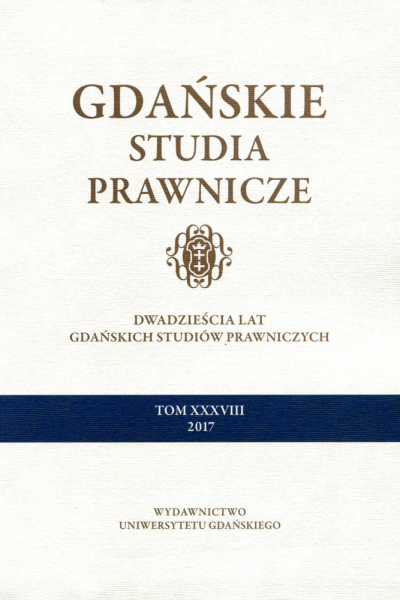Ustrój konstytucyjny wolnego i hanzeatyckiego miasta Lubeka w latach 1848–1939
Constitutional System of the Free and Hanseatic City
of Lübeck in Years 1848-1939
Author(s): Tadeusz MaciejewskiSubject(s): History of Law
Published by: Wydawnictwo Uniwersytetu Gdańskiego
Summary/Abstract: The constitutional system of Lübeck was formed in the mid-twelfth century. Until the second half of the 17th century it remained unchanged. However, the constitutional recesses of 1665 and 1669 only little changed the medieval image of the organization of the city based on state institutions with a strong advantage of patricians. Greater reforms were not introduced also at the beginning of the 19th century, when the city was under French domination. It was only the Spring of Nations of 1848 that created favorable conditions for the change of the existing legal status. On April 8, 1848, the first Constitution of Lübeck was adopted, replacing twelve state bourgeois colleges by a 120-person Citizens’ Assembly.However, the electoral system for this institution was criticized which resulted in its revision on December 29, 1851. After the creation of the Second Reich (1871), Lübeck became a member of the German federation. The new constitutional system of the city based on the mid-nineteenth century model was implemented by the Constitution of April 1875, revised after the reform of electoral law on October 9, 1907. After the creation of the WeimarRepublic on April 23, 1920, another constitution was adopted which was based on the previous ones. Finally, in 1933, the city was incorporated to Prussia as a separate district under the provisional law on the uniformity of the constitutional system.
Journal: Gdańskie Studia Prawnicze
- Issue Year: 2017
- Issue No: XXXVIII
- Page Range: 415-434
- Page Count: 20
- Language: Polish

